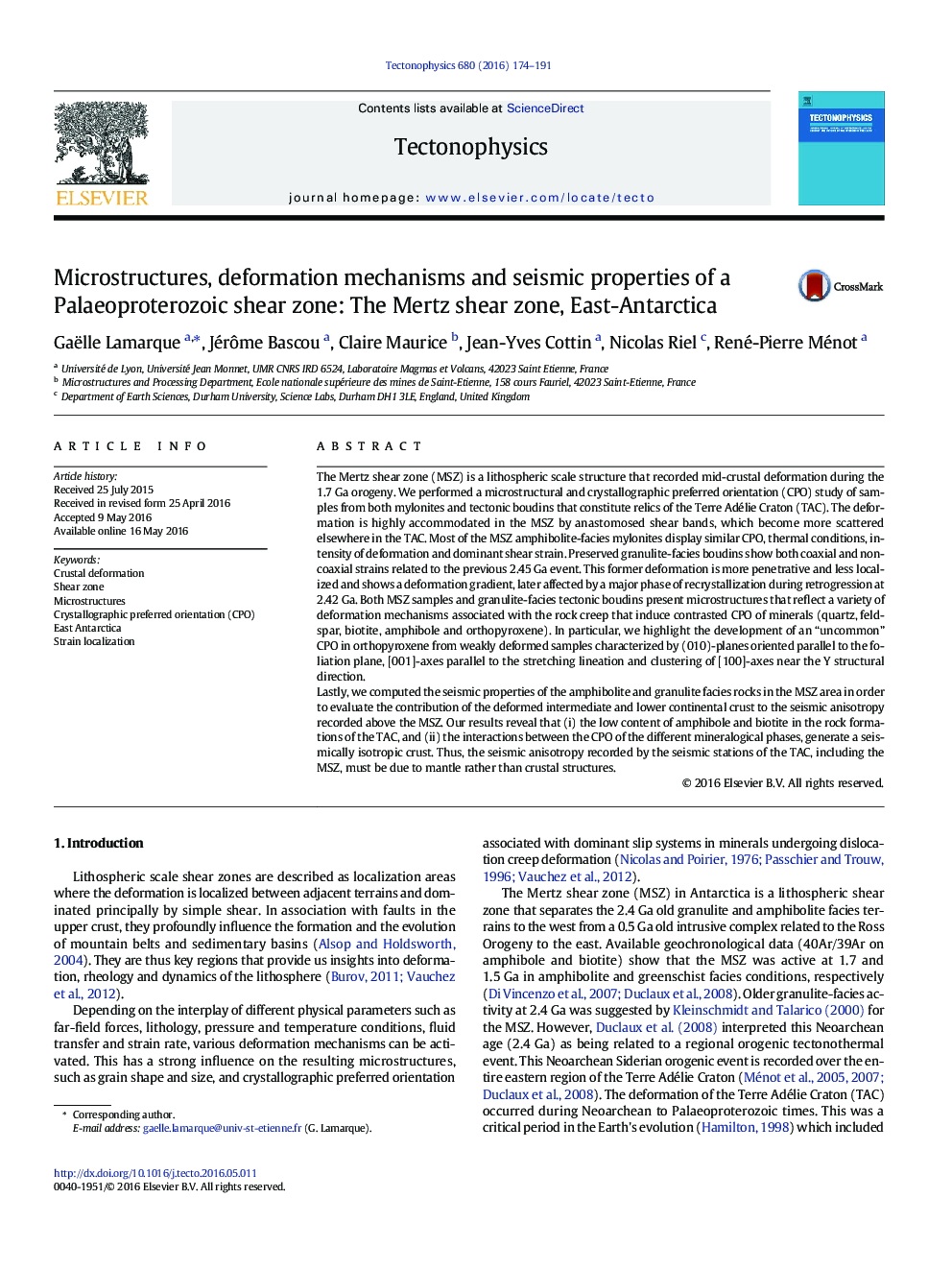| Article ID | Journal | Published Year | Pages | File Type |
|---|---|---|---|---|
| 6433357 | Tectonophysics | 2016 | 18 Pages |
â¢Microstructures and CPO of a mid-crustal lithospheric-scale shear zone were studied.â¢SGR with subordinate GBM accommodate simple shear deformation at medium temperatures.â¢Deformation processes led to the development of various CPO patterns of minerals.â¢We highlight an “uncommon” fabric for orthopyroxene in weakly deformed samples.â¢The crust affected by the MSZ could be seismically isotropic.
The Mertz shear zone (MSZ) is a lithospheric scale structure that recorded mid-crustal deformation during the 1.7Â Ga orogeny. We performed a microstructural and crystallographic preferred orientation (CPO) study of samples from both mylonites and tectonic boudins that constitute relics of the Terre Adélie Craton (TAC). The deformation is highly accommodated in the MSZ by anastomosed shear bands, which become more scattered elsewhere in the TAC. Most of the MSZ amphibolite-facies mylonites display similar CPO, thermal conditions, intensity of deformation and dominant shear strain. Preserved granulite-facies boudins show both coaxial and non-coaxial strains related to the previous 2.45Â Ga event. This former deformation is more penetrative and less localized and shows a deformation gradient, later affected by a major phase of recrystallization during retrogression at 2.42Â Ga. Both MSZ samples and granulite-facies tectonic boudins present microstructures that reflect a variety of deformation mechanisms associated with the rock creep that induce contrasted CPO of minerals (quartz, feldspar, biotite, amphibole and orthopyroxene). In particular, we highlight the development of an “uncommon” CPO in orthopyroxene from weakly deformed samples characterized by (010)-planes oriented parallel to the foliation plane, [001]-axes parallel to the stretching lineation and clustering of [100]-axes near the Y structural direction.Lastly, we computed the seismic properties of the amphibolite and granulite facies rocks in the MSZ area in order to evaluate the contribution of the deformed intermediate and lower continental crust to the seismic anisotropy recorded above the MSZ. Our results reveal that (i) the low content of amphibole and biotite in the rock formations of the TAC, and (ii) the interactions between the CPO of the different mineralogical phases, generate a seismically isotropic crust. Thus, the seismic anisotropy recorded by the seismic stations of the TAC, including the MSZ, must be due to mantle rather than crustal structures.
